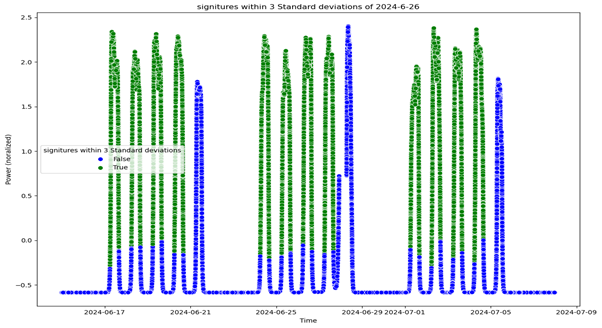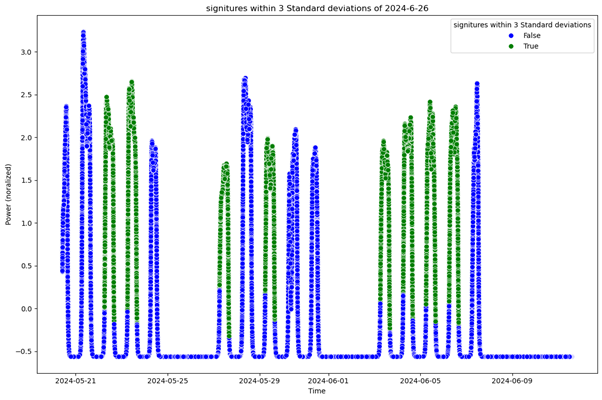McDonald Water Storage Improves Operational Efficiency through Energy Optimisation and Air Quality Analysis
McDonald Water Storage is a premier UK-based manufacturer of copper hot water systems, they are renowned for their commitment to quality and service excellence. As a privately owned company, McDonald Water Storage specialises in producing various hot water tanks and thermal storage solutions, offering a flexible service tailored to the demands of the current economic landscape.

Siutation
Faced with rising energy costs and a growing focus on operational efficiency, McDonald Water Storage sought opportunities to optimise energy use and enhance workplace safety through air quality management. The company had two primary objectives:
- To compare the energy efficiency and reliability of two air compressors — an older model without modern power electronics and a newer compressor equipped with a Variable Speed Drive (VSD).
- To monitor air quality within the manufacturing facility, mainly focusing on CO2 levels, Air Quality Index (AQI), and total volatile organic compounds (TVOC), in order to address potential health and safety risks.
Solution
The project involved two distinct yet interconnected analyses: energy monitoring of air compressors and air quality assessment within the facility.
Energy Monitoring of Air Compressors
McDonald Water Storage requested SMDH to compare the performance of two air compressors: an older model without VSD and a newer model equipped with VSD. The goal was to determine whether upgrading to a VSD-equipped compressor would deliver significant energy savings and improved operational consistency.
- Data Collection: A power monitoring sensor was installed on each compressor for 15 operational days. The sensors recorded the energy signature, which was then analysed for consistency and overall energy consumption.
- Data Cleaning and Filtering: The data were cleaned using a first order Butterworth low-pass filter to reduce noise and enhance accuracy. This process facilitated a more reliable comparison of energy signatures between the compressors.
- Analysis: The data revealed that the VSD compressor exhibited a more consistent energy signature throughout the operational period, indicating higher reliability. Additionally, the VSD compressor consumed 18% less energy compared with the older model, making a strong case for the benefits of investing in VSD technology.
Figure 1 and Figure 2 below compare the energy signatures of the VSD and non-VSD compressors, showing variations over the operational period. Highlight the consistency and lower energy consumption of the VSD compressor.
Solution
Air Quality Monitoring and Analysis
In parallel, McDonald Water Storage sought to monitor indoor air quality to ensure a safe working environment. The company installed two air quality sensors from SMDH in the manufacturing facility to track parameters such as CO2 levels, AQI, temperature, humidity, and particulate matter (PM1, PM2.5, PM4, PM10).
- Dashboard Development: SMDH created an Air Quality Dashboard, providing real-time tracking of air quality metrics with daily overviews and detailed minute-by-minute analysis. The dashboard highlighted instances where air quality exceeded recommended limits.
- Key Findings: The analysis showed occasional spikes in CO2 and TVOC levels, particularly during breaks from 10 to 11 am. While no significant air quality changes were linked to welding or brazing activities, the monitoring suggested that actions might be required to improve ventilation during peak times.
- Health and Safety Implications: The dashboard provided insights that allowed McDonald Water Storage’s health and safety team to identify high-risk periods and take corrective measures, such as increasing ventilation or adjusting work schedules to minimise prolonged exposure to suboptimal air quality.
Figure 3 shows the CO2 fluctuation over a specific day, shown in light blue. The orange line displays the average CO2 over a typical day for comparison (e.g., the day selected is a Tuesday, and it shows the average CO2 over all Tuesdays in the dataset). When CO2 goes above the recommended level of 1000, it is shown as dark red and red.
Successes
The project yielded significant benefits for McDonald Water Storage, including:
- Energy Efficiency Improvements: The analysis demonstrated that the VSD compressor reduced energy consumption and maintained a stable energy profile, suggesting increased reliability. This insight supported the company’s investment in modern, energy-efficient equipment.
- Enhanced Workplace Safety: The Air Quality Dashboard provided actionable insights into air quality trends, allowing the health and safety team to take preemptive measures to protect workers from potential exposure to harmful air quality levels.
- Data-Driven Decision-Making: The project fostered a culture of data-driven decision-making, encouraging McDonald Water Storage to consider further investments in energy monitoring and real-time data insights for other machinery.
McDonald Water Storage plans to:
- Upgrade more air compressors to VSD models based on the success of this analysis.
- Continue air quality monitoring, with plans to relocate sensors to areas with higher activity, such as welding and brazing stations.
- Explore the implementation of real-time energy monitoring for other critical equipment within the facility.





Quote from the Company
“The insights provided by SMDH have been instrumental in guiding our energy efficiency strategy and enhancing workplace safety. We now have the data-driven evidence to support investments in modern equipment and the measures needed to maintain a safe working environment.”
— McDonald Water Storage